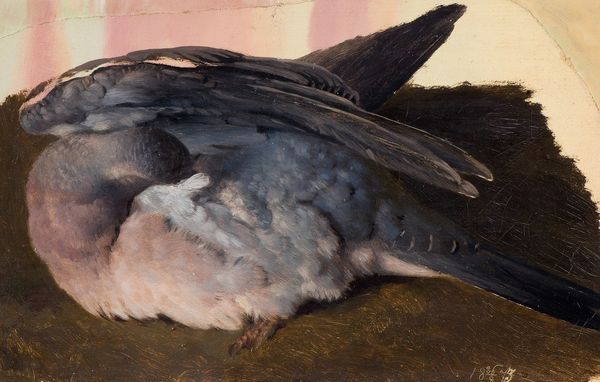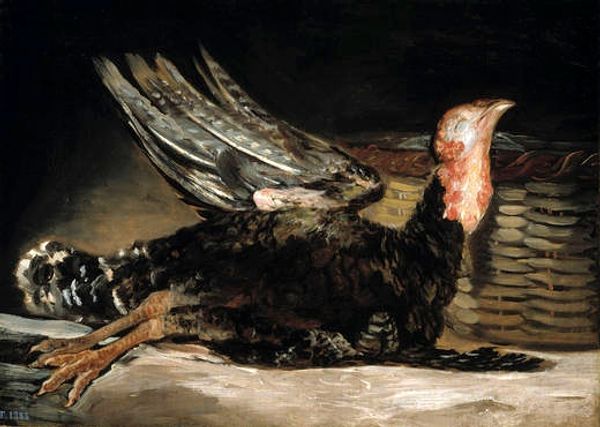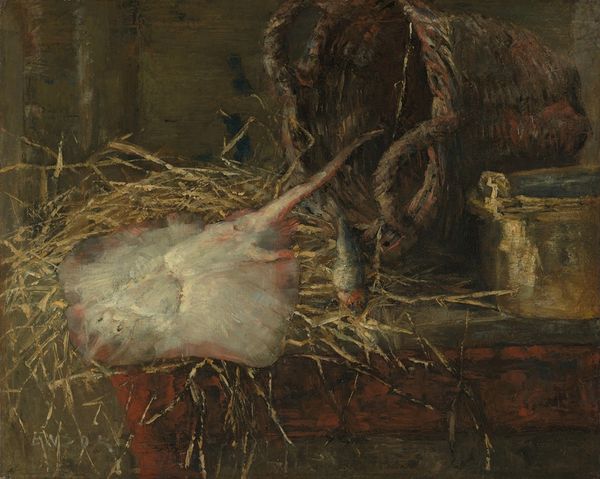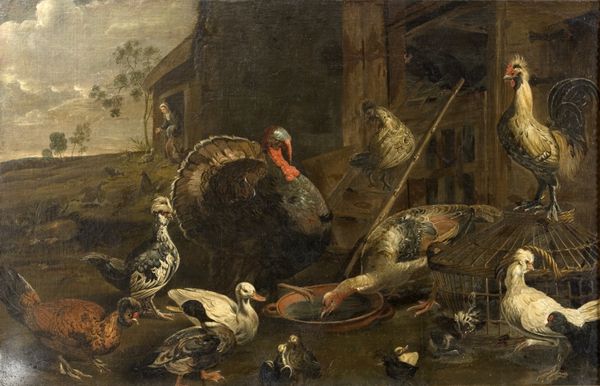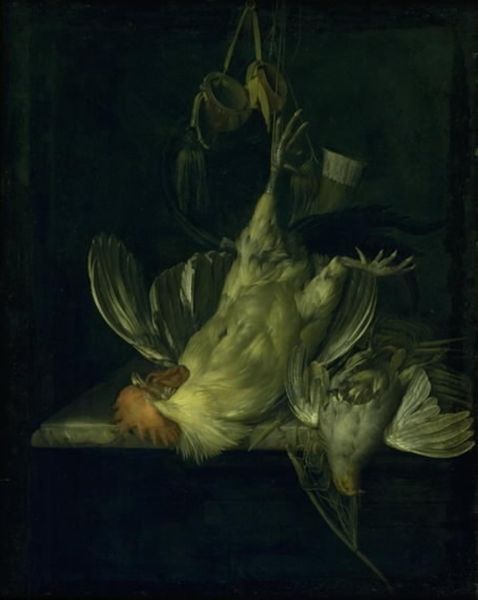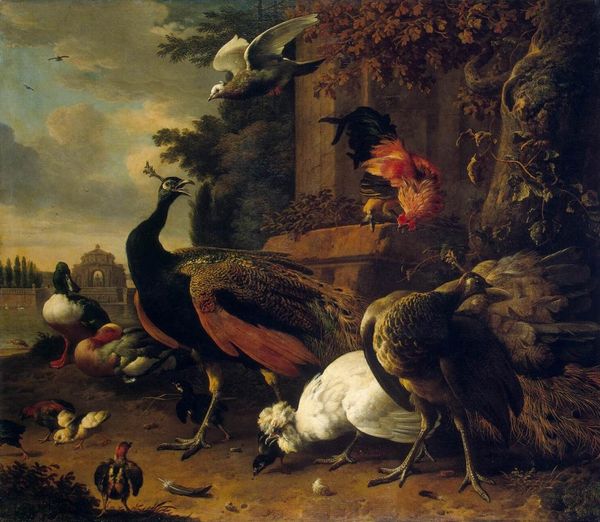
Dimensions: 97 x 79 cm
Copyright: Public domain
Editor: We’re looking at Alfred Sisley’s “Still Life: Heron with Spread Wings” from 1867, rendered in oil paint. I find the subject matter rather morbid, and the color palette somewhat muted, what do you see in this piece? Curator: Well, on first glance, it appears as a straightforward still life. But when considering the social context, such depictions of game became potent symbols. Hunting was a privilege, deeply entwined with class and power. What statement is Sisley, a figure later associated with Impressionism and its bourgeois subject matter, trying to make? Editor: That’s interesting! So the image goes beyond just depicting dead animals. How does the artistic style contribute? Curator: Consider the style of Realism that Sisley adopts here. It's a deliberate choice to portray the scene "as is," without idealizing. This lack of embellishment can be seen as a commentary on the very act of hunting, stripped of any romanticism. Notice, for example, how the heron's wing fills the central space, confronting the viewer directly. What sort of mood does that stylistic decision evoke? Editor: I guess that it forces a bit of discomfort on the viewer, as the bird isn't glorified, but almost unceremoniously displayed. Curator: Exactly! Also, by displaying it publicly, like in a gallery, who is really consuming this imagery and what statements are being made by that person in how they appreciate, and more broadly consume this image? Does knowing about the history of that art make you change how you appreciate it? Editor: Definitely. Considering the hunting context changes how I view the image completely! It gives new layers of meaning beyond just a regular depiction. I initially thought it was dark, but I now understand its broader historical significance. Thank you for showing how art is shaped and framed through institutions and power!
Comments
No comments
Be the first to comment and join the conversation on the ultimate creative platform.
